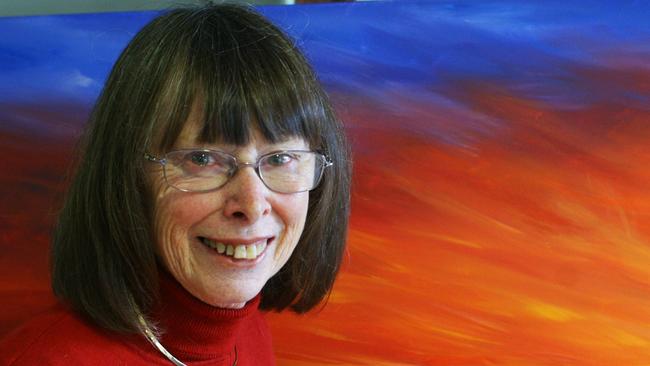Artist Nyree Reynolds, who helped block $1bn goldmine, reveals her ‘mixed heritage’
Nyree Reynolds described herself as a member of the Gamilaraay Nation – an area outside Wiradjuri country – until at least 2014. That year, she identified as Gamilaraay in a letter of protest.

The award-winning Indigenous artist who helped convince Tanya Plibersek to rule against a proposed $1bn goldmine in central west NSW, citing ancient practices of the local Wiradjuri people, began publicly identifying as Wiradjuri only later in life.
Nyree Reynolds described herself as a member of the Gamilaraay Nation – an area outside Wiradjuri country – until at least 2014. That year, she identified as Gamilaraay in a letter of protest against a proposed goat abattoir in Blayney near Orange in central west NSW. Ms Reynolds, who was born in Wollongong on the southern NSW coast, told The Australian on Monday that her mother was from Gamilaraay country, then the family learned of an ancestor from Wiradjuri country which takes in Blayney, Orange and Bathurst.
“That’s common – some people have three different nations in their heritage,” Ms Reynolds said.
A lack of detail about the reasons for the Environment Minister’s decision to excise the headwaters of the Belubula River from the tailings dam for the proposed $1bn mine has led to scrutiny of those involved, including the dissident Wiradyuri Traditional Owners Central West Aboriginal Corporation – a registered charity.
Its advice that the area was of cultural significance to the local Wiradjuri people was at odds with that of the Orange Local Aboriginal Land Council, which has cultural authority for the Blayney area under NSW law. The land council conducted its own surveys and found the proposed mine would not impact any sites of high significance to Wiradjuri people.
Little is known about the Wiradyuri corporation in part because it lists just 18 members on the website of the office of the registrar of Indigenous corporations and most of those are first names only. One of the corporation’s directors is a former employee of the Orange land council, historian Lisa Paton. She wrote recently of the proposed site of the mine: “This area is significant to my personal journey in discovering my Aboriginal Heritage.”
Former NSW Aboriginal Land Council chair Roy Ah-See has been a consistent critic of breakaway or dissident groups advocating for areas that local Aboriginal land councils are empowered to speak about under the state land rights act of 1983. Mr Ah-See told The Australian on Monday that NSW land councils were the right bodies to consult because their boards were elected and they practised the accepted three-part test for Indigeneity.
“They have got statutory authority and constituted boundaries and therefore they are the cultural authority,” he said.
On Monday Ms Plibersek lauded a national gathering of Indigenous rangers and land managers in Darwin this week, saying: “We all have so much to learn from Indigenous land and water managers about how we can better protect the diverse lands and waters of this country”.
“First Nations people have actively managed country for 65,000 years. That’s why we’re empowering First Nations communities to protect Australia’s environment, while also supporting local jobs and economic development,” Ms Plibersek said in a statement.
However, opposition environment spokesman Johnno Dunium told The Australian: “The Environment Minister hasn’t been clear about why the position of the local Aboriginal Land Council was outweighed by a group that aren’t the authoritative Indigenous representatives for the area.
“I think that’s it’s very reasonable to ask who has the authority in this area to try to shut down a project on Indigenous cultural heritage grounds,” he said.
“The Prime Minister said that we need a “common sense” approach to mining approvals. If he thinks that it is “common sense” for a billion-dollar mine to get every state and federal approval possible after four years of consultation but be rejected at the last moment for reasons that remain unclear, then he needs a reality check about the investment climate under his government.”
The Wiradyuri corporation has declined to answer questions about its role.




To join the conversation, please log in. Don't have an account? Register
Join the conversation, you are commenting as Logout